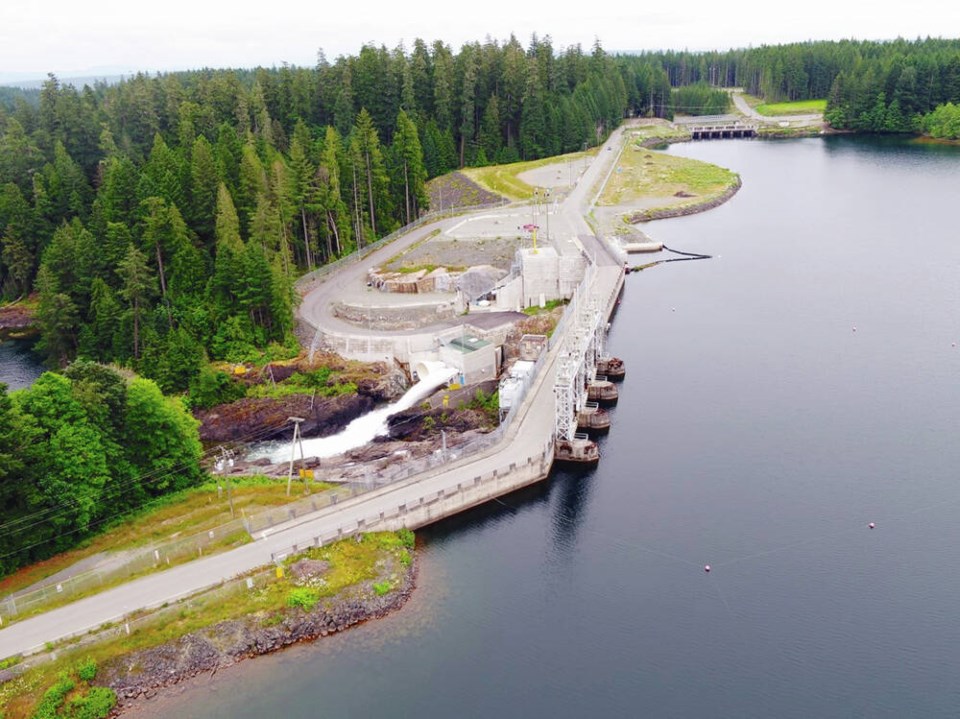Strained financial results at B.C. Hydro in the 2023-24 fiscal year aren’t giving Energy Minister Josie Osborne any pause on the $370-million affordability credit written into the province’s 2024-25 budget.
Late Wednesday, B.C. Hydro released third-quarter financial results that showed $1 billion less revenue compared to the same period of its previous year in part because of drought conditions that left the utility short of power to meet domestic demand.
That made Hydro a net importer of electricity rather than the net exporter it has been in better years, with the difference in trade worth about $828 million by Dec. 31, 2023. B.C. Hydro’s fiscal year matches government, which ends March 31.
Osborne, however, said the affordability credit, as government is calling the one-time benefit of about $100 per household, “is a really important step for people to see” as British Columbians face serious financial pressures.
“Our focus is always going to be on people and we know that people are facing some very challenging conditions right now with interest rates and with the cost of inflation,” Osborne said.
She added that government is taking a lower net income from Hydro in the 2023-24 budget year, $314 million versus $712 million, so that the utility can account for its $340-million share of the credit.
Osborne’s ministry is using $30 million from its 2023-24 contingency funds to cover the credit for non-B.C. Hydro customers, primarily in the Kootenays covered by FortisBC’s electric utility operations.
“B.C. Hydro’s portion will be funded from B.C. Hydro’s operating results [and] net income for 2023-24 [and] will have lower income than planned for this year,” said B.C. Hydro spokesperson Kyle Donaldson.
B.C. Hydro’s third-quarter financial report, however, showed that as of Dec. 31, 2023, it had made $522 million in transfers from regulatory balances to shore up its results.
B.C. Hydro’s interim consolidated income statement in the report showed $5.4 billion in revenue versus $5.6 billion in operating expenses and finance charges, which left a $178-million shortfall at the end of nine months without the transfers.
Donaldson said the credit, however, won’t be reflected in Hydro’s financial results until its year-end results after March 31, and will show up as a reduction in revenue for its fourth quarter.
Hydro’s net income would have been $654 million for 2023-24 without the credit, according to the statement, and it is “not being funded from B.C. Hydro’s regulatory accounts,” Donaldson said.
Regulatory accounts, which are overseen by the B.C. Utilities Commission, allow B.C. Hydro to defer short-term losses to smooth over potential rate shocks in a given year.
Osborne said B.C. Hydro has managed those regulatory accounts well, reducing their accumulated balances to $2.2 billion from the $6 billion that were on the books as of 2015-16.
“Using regulatory accounts is normal practice for B.C. Hydro,” Osborne said. So is accounting for swings in domestic power production due to drought, she added.
And while Hydro’s power trading division Powerex might have earned less from exports in 2023-24, Osborne said Powerex has earned a net $2.5 billion from trading activity over the last five years.
Conditions for Hydro don’t look a lot better for 2024 with water storage in its reservoirs “tracking below the 10-year average due to below-average inflows” in the second half of its fiscal 2023 and into the start of 2024.
“System energy storage at Dec. 31, 2023, was lower than at Dec. 31, 2022,” according to the report.
Osborne, however, said the utility has weathered drought cycles in the past, such as 2005 to 2007 when low inflows to its reservoirs reduced power production, but Hydro is also giving more consideration to a range of climate-change scenarios, including the prospect of longer droughts.
“It’s really important that moving forward we diversify the energy system,” Osborne said.
She added Hydro’s call to add 3,000 gigawatt-hours per yer of new electricity supply will pay particular attention to the integration of more wind and solar power generation that “is going to make us more resilient to climate change impacts in the future.”



